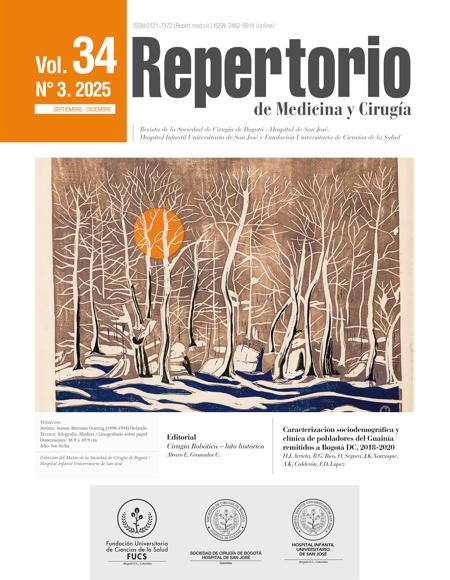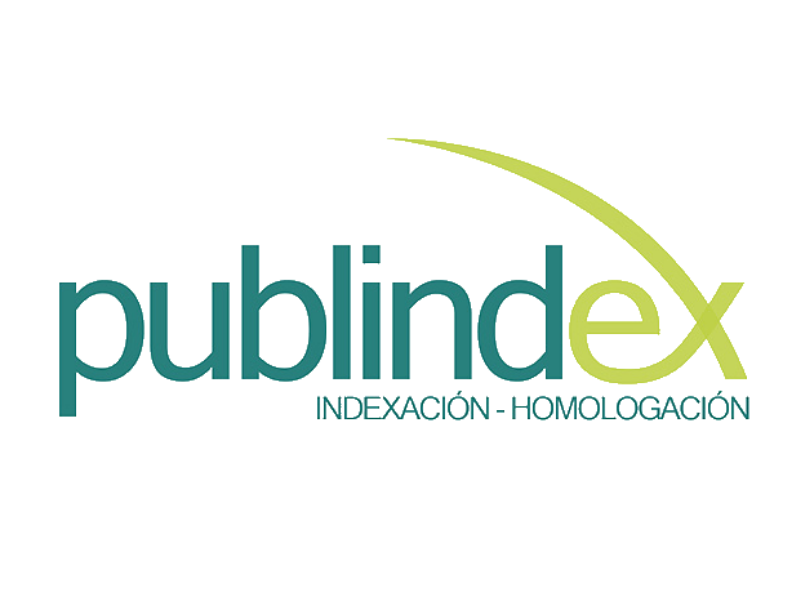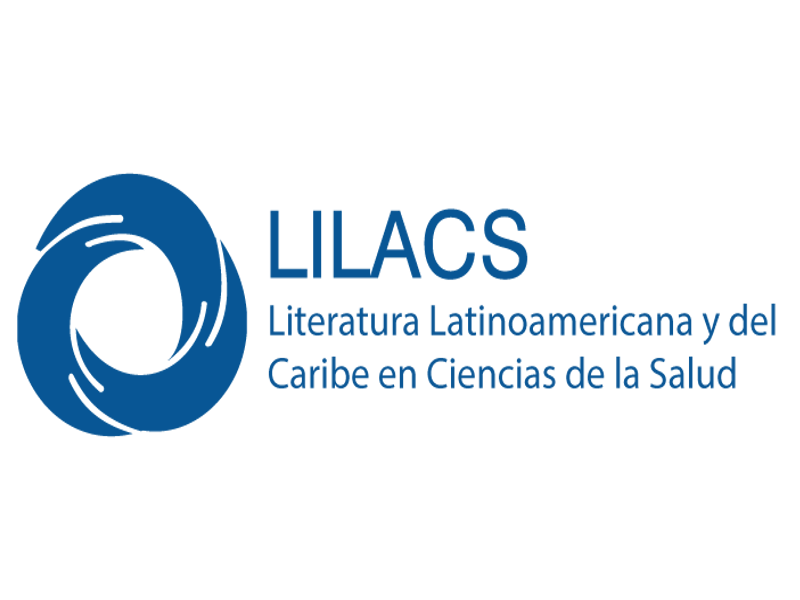Hipotermia terapéutica como estrategia de tratamiento en neonatos con encefalopatía hipóxico-isquémica
Therapeutic hypothermia as a treatment strategy for neonates with hypoxic-ischemic encephalopathy
Esta obra está bajo una licencia internacional Creative Commons Atribución-NoComercial-CompartirIgual 4.0.
Mostrar biografía de los autores
Introducción: la encefalopatía hipóxico-isquémica (EHI) afecta la función neurológica de los recién nacidos y causa lesiones cerebrales. La terapia más respaldada es la hipotermia terapéutica, iniciada en las primeras 6 horas posparto para reducirlas. Objetivo: realizar una actualización respecto a la eficacia y seguridad de la hipotermia terapéutica en el tratamiento de EHI en neonatos. Material y métodos: revisión sistemática de publicaciones actualizadas mediante la guía PRISMA. Se seleccionaron 10 bases de datos con un total de 1.962 artículos basados en los términos claves, los cuales fueron filtrados con criterios de inclusión y exclusión; se encontraron 4 estudios relevantes con adecuada calidad, basados en los cuestionarios de Critical Appraisal Checklist de Joanna Briggs Institute (JBI). Resultados y discusión: los resultados indican que la hipotermia terapéutica mediante diferentes métodos, ha demostrado beneficios en la reducción de lesiones cerebrales en neonatos. Sin embargo, se observaron complicaciones y eventos adversos, como coagulación intravascular diseminada, bradiarritmia y trombocitopenia, que indican la necesidad del monitoreo cuidadoso. Conclusiones: se ha identificado que la hipotermia terapéutica es un tratamiento valioso, es esencial considerar sus diferentes métodos, efectos secundarios y la necesidad de una intervención temprana para mejorar los resultados en neonatos con encefalopatía hipóxico-isquémica.
Visitas del artículo 428 | Visitas PDF 142
Descargas
- Suppiej A, Vedovelli L, Boschiero D, Bolzon M, Cainelli E. Abnormal heart rate variability at school age in survivors of neonatal hypoxic-ischemic encephalopathy managed with therapeutic hypothermia. Eur J Paediatr Neurol. 2020;29:66-70. https://doi.org/10.1016/j.ejpn.2020.08.004
- Lemyre B, Chau V. Hypothermia for newborns with hypoxic-ischemic encephalopathy. Paediatr Child Health. 2018;23(4):285–91. https://doi.org/10.1093/pch/pxy028
- Romeo DM, Bompard S, Serrao F, Leo G, Cicala G, Velli C, et al. Early neurological assessment in infants with hypoxic ischemic encephalopathy treated with therapeutic hypothermia. J Clin Med. 2019;8(8):1247. https://doi.org/10.3390/jcm8081247
- Packer CH, Hersh AR, Sargent JA, Caughey AB. Therapeutic hypothermia in severe hypoxic-ischemic encephalopathy: a cost-effectiveness analysis. J Matern Fetal Neonatal Med. 2022;35(5):890–7. https://doi.org/10.1080/14767058.2020.1733519
- Battersby C, Longford N, Patel M, Selby E, Ojha S, Dorling J, et al. Study protocol: Optimising newborn nutrition during and after neonatal therapeutic hypothermia in the United Kingdom: Observational study of routinely collected data using propensity matching. BMJ Open. 2018;8(10):e026739. https://doi.org/10.1136/bmjopen-2018-026739
- Bhandary P, Daniel JM, Skinner SC, Bacon MK, Hanna M, Bauer JA, et al. Case series of therapeutic hypothermia for neonatal hypoxic-ischemic encephalopathy during extracorporeal life support. Perfusion (United Kingdom). 2020;35(7):700–6. https://doi.org/10.1177/0267659119899521
- Gilmore MM, Tekes A, Perin J, Parkinson C, Spahic H, Chavez-Valdez R, et al. Later cooling within 6 h and temperatures outside 33–34 °C are not associated with dysfunctional autoregulation during hypothermia for neonatal encephalopathy. Pediatr Res. 2021;89(1):223–30. https://doi.org/10.1038/s41390-020-0876-8
- Jia W, Lei X, Dong W, Li Q. Benefits of starting hypothermia treatment within 6h vs. 6-12h in newborns with moderate neonatal hypoxic-ischemic encephalopathy. BMC Pediatr. 2018;18(1):50. https://doi.org/10.1186/s12887-018-1013-2
- Thayyil S, Pant S, Montaldo P, Shukla D, Oliveira V, Ivain P, et al. Hypothermia for moderate or severe neonatal encephalopathy in low-income and middle-income countries (HELIX): a randomised controlled trial in India, Sri Lanka, and Bangladesh. Lancet Glob Health. 2021;9(9):e1273–85. https://doi.org/10.1016/S2214-109X(21)00264-3
- Aker K, Støen R, Eikenes L, Martinez-Biarge M, Nakken I, Håberg AK, et al. Therapeutic hypothermia for neonatal hypoxic-ischaemic encephalopathy in India (THIN study): A randomised controlled trial. Arch Dis Child Fetal Neonatal Ed. 2020;105(4):405–11. https://doi.org/10.1136/archdischild-2019-317311
- Prashantha YN, Suman Rao PN, Nesargi S, Chandrakala BS, Balla KC, Shashidhar A. Therapeutic hypothermia for moderate and severe hypoxic ischaemic encephalopathy in newborns using low-cost devices – ice packs and phase changing material. Paediatr Int Child Health [Internet]. 2019;39(4):234–9. Available from: https://doi.org/10.1080/20469047.2018.1500805
- Weng B, Yan C, Chen Y, Gong X, Cai C. Efficiency Evaluation of Neuroprotection for Therapeutic Hypothermia to Neonatal Hypoxic-Ischemic Encephalopathy. Front Neurosci. 2021;15:668909. https://doi.org/10.3389/fnins.2021.668909
- Yang T, Li S. Efficacy of different treatment times of mild cerebral hypothermia on oxidative factors and neuroprotective effects in neonatal patients with moderate/severe hypoxic-ischemic encephalopathy. J Int Med Res. 2020;48(9):300060520943770. https://doi.org/10.1177/0300060520943770
- Olson L, Lothian C, Ådén U, Lagercrantz H, Robertson NJ, Setterwall F. Phase-Changing Glauber Salt Solution for Medical Applications in the 28-32 °C Interval. Materials (Basel). 2021 Nov 23;14(23):7106. https://doi.org/10.3390/ma14237106
- Yang T, King WP, Miljkovic N. Phase change material-based thermal energy storage. Vol. 2, Cell Reports Physical Science. Cell Press; 2021;2(8):100540. https://doi.org/10.1016/j.xcrp.2021.100540
- Baldry M, Timchenko V, Menictas C. Thermal modelling of controlled scalp hypothermia using a thermoelectric cooling cap. J Therm Biol. 2018;76:8-20. doi: https://doi.org/10.1016/j.jtherbio.2018.06.008
- Sun YJ, Zhang ZY, Fan B, Li GY. Neuroprotection by Therapeutic Hypothermia. Front Neurosci. 2019 Jun 11;13:586. https://doi.org/10.3389/fnins.2019.00586
- Garcia-Alix A, Arnaez J, Herranz-Rubia N, Alarcón A, Arca G, Valverde E, Blanco D, Lubian S; Grupo Cerebro Neonatal. Ten years since the introduction of therapeutic hypothermia in neonates with perinatal hypoxic-ischaemic encephalopathy in Spain. Neurologia (Engl Ed). 2023;38(5):364-371. https://doi.org/10.1016/j.nrleng.2020.05.024
- Kashiwagi Y, Komukai K, Kimura H, Okuyama T, Maehara T, Fukushima K, Kamba T, Oki Y, Shirasaki K, Kubota T, Miyanaga S, Nagoshi T, Yoshimura M. Therapeutic hypothermia after cardiac arrest increases the plasma level of B-type natriuretic peptide. Sci Rep. 2020;10(1):15545. https://doi.org/10.1038/s41598-020-72703-2
- Hiis HG, Cosson M V, Dahl CP, Fiane AE, Finn X, Levy O, et al. Hypothermia elongates the contraction-relaxation cycle in explanted human failing heart decreasing the time for ventricular filling during diastole. Am J Physiol Heart Circ Physiol. 2018;315(5):1137–47. https://doi.org/10.1152/ajpheart.00208.2018
- van Wincoop M, de Bijl-Marcus K, Lilien M, van den Hoogen A, Groenendaal F. Effect of therapeutic hypothermia on renal and myocardial function in asphyxiated (near) term neonates: A systematic review and meta-analysis. PLoS One. 2021;16(2):e0247403. https://doi.org/10.1371/journal.pone.0247403
- Draznin B, Dungan K, Seggelke S. Insulin Resistance in Patients Treated with Therapeutic Hypothermia and in Patients with Severe Burns. In: Draznin B, editor. Managing Diabetes and Hyperglycemia in the Hospital Setting: A Clinician’s Guide. American Diabetes Association; 2016. https://doi.org/10.2337/9781580406086.15
- Szakmar E, Jermendy A, El-Dib M. Respiratory management during therapeutic hypothermia for hypoxic-ischemic encephalopathy. J Perinatol. 2019 Jun;39(6):763-773. doi: 10.1038/s41372-019-0349-2. Epub 2019 Mar 11. Erratum in: J Perinatol. 2019;39(6):891. https://doi.org/10.1038/s41372-019-0371-4
- Kander T, Schött U. Effect of hypothermia on haemostasis and bleeding risk: a narrative review. J Int Med Res. 2019;47(8):3559-3568 https://doi.org/10.1177/0300060519861469
- Barrientos Gomez JG, Gomez Sanchez MP, Perez Llanes A, Parada Zuluaga JS, Zapata Henao LC, Villamil L. Eventos adversos de la hipotermia terapéutica en neonatos con encefalopatía hipóxico - isquémica en una unidad de cuidado intensivo neonatal. Pediatria (Bucur). 2022;55(3):111–9.
- Szpecht D, Bagnosz-Magnuszewska A, Szymankiewicz M, Gadzinowski J. Subcutaneous fat necrosis in neonates after therapeutic hypothermia - report of two cases. Postepy Dermatol Alergol. 2016;33(2):152-4. doi: https://doi.org/10.5114/ada.2016.59164













